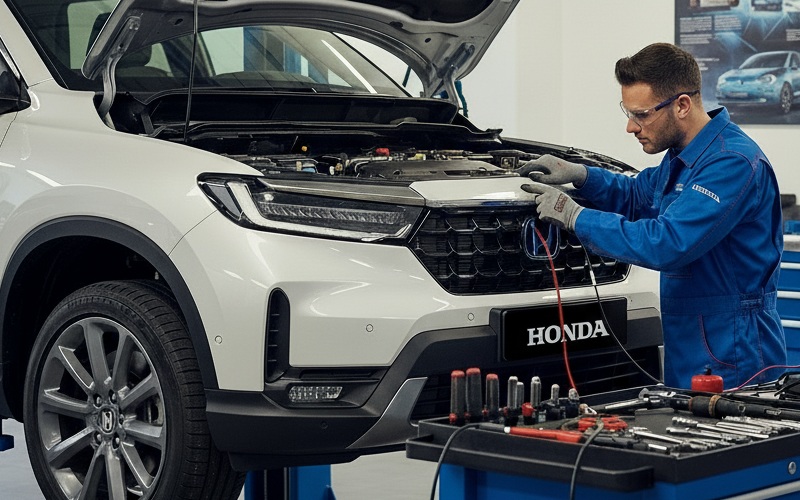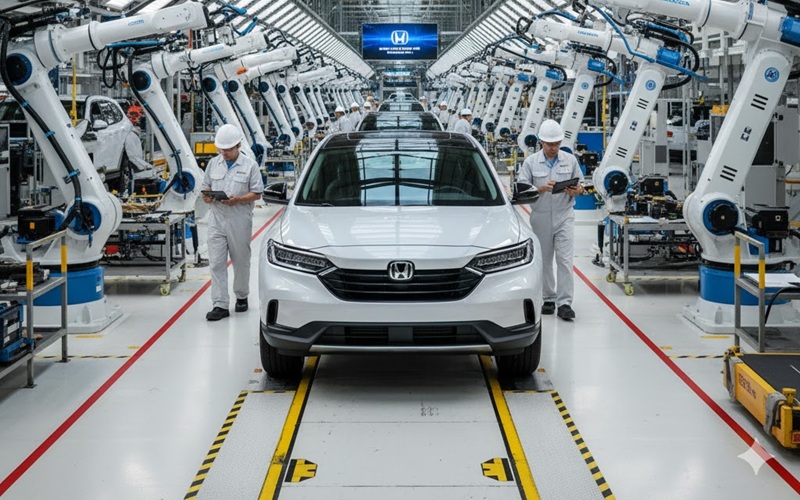Electric vehicles represent the future of automotive transportation, and Honda has embraced this evolution with its line of electric vehicles. Understanding how to properly maintain these sophisticated machines is essential for ensuring optimal performance, extended battery life, and overall reliability. Unlike traditional internal combustion engine vehicles, electric Honda models require a different approach to maintenance, focusing more on electronic systems and battery care rather than the mechanical components that dominate conventional vehicle maintenance schedules.

The Battery System
The heart of any electric vehicle is its battery system, and proper care of this component is paramount for Honda electric vehicle owners. The high-voltage lithium-ion battery packs in Honda electric models benefit from consistent charging habits. Experts recommend maintaining the battery charge between 20% and 80% for daily use, which helps preserve battery health and extend its lifespan. While occasional full charges are acceptable, particularly before long journeys, routinely charging to 100% can accelerate battery degradation over time. Similarly, allowing the battery to regularly drain below 10% can negatively impact its long-term performance.
Temperature management plays a crucial role in battery maintenance. Honda electric vehicles include sophisticated thermal management systems that help maintain optimal battery temperature, but owners should still be mindful of extreme conditions. When possible, park in shaded areas during hot weather and in covered garages during cold seasons. This simple practice helps the vehicle’s thermal management system operate more efficiently, preserving battery capacity and extending range performance.
Electric Engine and Brake Maintenance
While electric Honda vehicles eliminate many traditional maintenance items like oil changes, they still require regular attention to several critical areas. Tire maintenance remains essential, with rotation recommended approximately every 10,000 kilometers to ensure even wear and optimal efficiency. Since electric vehicles tend to be heavier than their combustion counterparts due to battery weight, and they deliver instant torque that can accelerate tire wear, proper inflation and regular inspection become even more important for safety and efficiency.
The braking system in electric Honda models operates differently from conventional vehicles due to regenerative braking technology, which recaptures energy during deceleration. This system significantly reduces wear on traditional friction brakes, often extending the lifespan of brake pads and rotors. However, regular inspection of these components remains necessary, especially since reduced use can sometimes lead to corrosion or seizing in humid environments. Many Honda EV owners report considerably longer brake component life, but this doesn’t eliminate the need for periodic checks.
Cooling systems in electric Honda vehicles serve multiple purposes, maintaining optimal temperatures for both the battery pack and other electronic components. Regular inspection of coolant levels and condition helps ensure these systems function properly. Unlike traditional radiator systems, the cooling systems in electric vehicles often involve multiple circuits with different purposes, making professional inspection during scheduled maintenance particularly valuable.
Cabin and Interior in Honda Electric Vehicles
The cabin air filter requires regular replacement, typically every 24,000 kilometers or annually, depending on driving conditions. This component is especially important in electric vehicles, where maintaining efficient climate control directly impacts range and battery performance. Some Honda electric models utilize heat pump technology for climate control, which operates more efficiently than traditional resistive heating, particularly in moderately cold conditions. Keeping this system maintained helps maximize range during colder months.
Software updates represent a maintenance aspect unique to modern electric vehicles. Honda regularly releases updates that can improve battery management, charging efficiency, range, and add new features. Ensuring your vehicle receives these updates, either through over-the-air technology or during service appointments, is an essential aspect of electric vehicle maintenance that has no parallel in traditional automotive care.
Five Facts About Electric Honda Vehicle Maintenance
1. The regenerative braking system in Honda electric vehicles can reduce brake pad wear by up to 75% compared to conventional vehicles, with some owners reporting original brake pads lasting beyond 100,000 kilometers.
2. Honda electric vehicle battery management system performs over 200 health checks per minute during operation, continuously optimizing performance and longevity without any driver intervention.
3. The thermal management system in Honda electric vehicles can pre-condition the battery while charging, ensuring optimal temperature before driving and maximizing range without drawing power from the battery itself.
4. Unlike conventional vehicles that require warming up in cold weather, Honda electric models actually perform more efficiently when “pre-conditioned” while still connected to a charger, preserving battery range.
5. The most common maintenance item for Honda electric vehicles is surprisingly simple: wiper blade replacement, as many traditional wear items like spark plugs, timing belts, and transmission components simply don’t exist in these vehicles.
Common Questions About Honda Electric Vehicle Maintenance
How often do Honda electric vehicles need maintenance compared to conventional models?
- EVs typically require significantly less frequent maintenance than conventional models. While traditional vehicles need regular oil changes, transmission service, and exhaust system inspections, electric models eliminate these requirements, focusing instead on tire rotations, brake inspections, cooling system checks, and cabin filter replacements.
Does the high-voltage battery in Honda electric vehicles require specific maintenance?
- The high-voltage battery itself doesn’t require direct maintenance from owners. However, following proper charging practices, avoiding extreme temperature exposure when possible, and ensuring the vehicle receives scheduled software updates all contribute to optimal battery health and longevity.
How often should tires be rotated on electric Honda models?
- Tire rotation is recommended approximately every 10,000 kilometers. Due to the instant torque delivery and additional weight of electric vehicles, even tire wear becomes particularly important for both safety and efficiency.
Will using rapid charging stations damage my Honda electric vehicle battery?
- Occasional use of rapid charging stations won’t significantly impact battery health. However, regular reliance on rapid charging can accelerate battery degradation over time. For daily use, you should use standard Level 2 charging whenever possible.
How does regenerative braking affect maintenance needs?
- Regenerative braking significantly reduces wear on brake pads and rotors by using the electric motor to slow the vehicle while generating electricity. This typically extends brake component life, but regular inspection remains important as reduced use can sometimes lead to corrosion.
Are there any fluids that you need to change in Honda electric vehicles?
- Yes, EVs still contain cooling systems that require periodic inspection and eventual coolant replacement. Additionally, brake fluid still requires periodic replacement, typically every 3 years, regardless of kilometers driven.
How can I maximize the range of my electric Honda vehicle?
- Regular maintenance plays a key role in range optimization. Ensuring proper tire inflation, timely cabin filter replacement, maintaining the cooling system, and keeping software updated all contribute to maximum efficiency and range.
What unique maintenance advantages do Honda electric vehicles offer?
- EVs eliminate numerous traditional maintenance items, including oil changes, spark plug replacement, timing belt service, exhaust system maintenance, and transmission fluid changes, resulting in lower long-term maintenance costs and reduced service frequency.
How often should the cabin air filter be replaced in Honda electric models?
- The cabin air filter typically requires replacement every 24,000 kilometers or annually, depending on driving conditions. This component is particularly important for maintaining efficient climate control, which directly impacts range.
Do Honda electric vehicles require special equipment or technicians for maintenance?
- While basic maintenance like tire rotations can be performed at any qualified service center, work involving high-voltage systems requires specially trained technicians using appropriate safety equipment. Honda dealerships with electric vehicle certification have technicians with specific training for these models.




